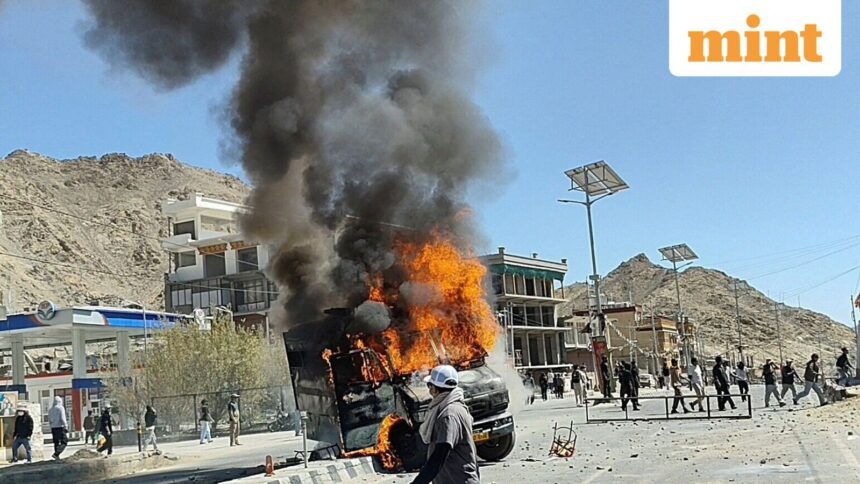Ladakh Protests: Key Developments
The movement for statehood in Ladakh escalated into violence on Wednesday, resulting in four fatalities and at least 59 injuries, including 22 police officers, as reported by officials. This outbreak of unrest is described as the most severe since 1989.
Climate activist Sonam Wangchuk concluded a two-week hunger strike aimed at advocating for statehood and the region’s inclusion under the Sixth Schedule of the Indian Constitution. In response to the increasing chaos, authorities imposed a curfew in Leh district to restore order.
Sources from PTI indicate that the Central Government remains open to dialogue and is considering advancing the meeting of the High Powered Committee with the protesting groups, the Apex Body of Leh (ABL) and the Kargil Democratic Alliance (KDA), from its scheduled date of October 6 to September 25–26.
The local youth, as cited in statements from various groups, are suffering due to what they describe as the narrow political ambitions of certain individuals, including activist Sonam Wangchuk.
In a related political reaction, the Bharatiya Janata Party (BJP) accused the Congress party of orchestrating the violence to create unrest similar to that seen in countries like Bangladesh, Nepal, and the Philippines. BJP MP and national spokesperson Sambit Patra commented, “Today in Ladakh, an attempt was made to portray some protests as being led by ‘Gen Z,’ but an investigation revealed that it was actually a Congress protest.”
The Sixth Schedule of the Indian Constitution specifically governs the administration of tribal areas in the northeastern states of Assam, Meghalaya, Tripura, and Mizoram through autonomous councils and regions. Enacted under Article 244(2) and Article 275(1), this schedule aims to protect the rights, culture, and resources of tribal communities by granting them significant autonomy over land, forests, and governance, thus safeguarding them from exploitation.
Each autonomous district is to be governed by a District Council, which can have a maximum of 30 members. Out of these, no more than four can be appointed by the Governor; the remaining members are to be elected through adult suffrage. Furthermore, the Sixth Schedule also provides for the establishment of a Regional Council for each autonomous region within an autonomous district, ensuring localized governance for distinct tribal communities.










